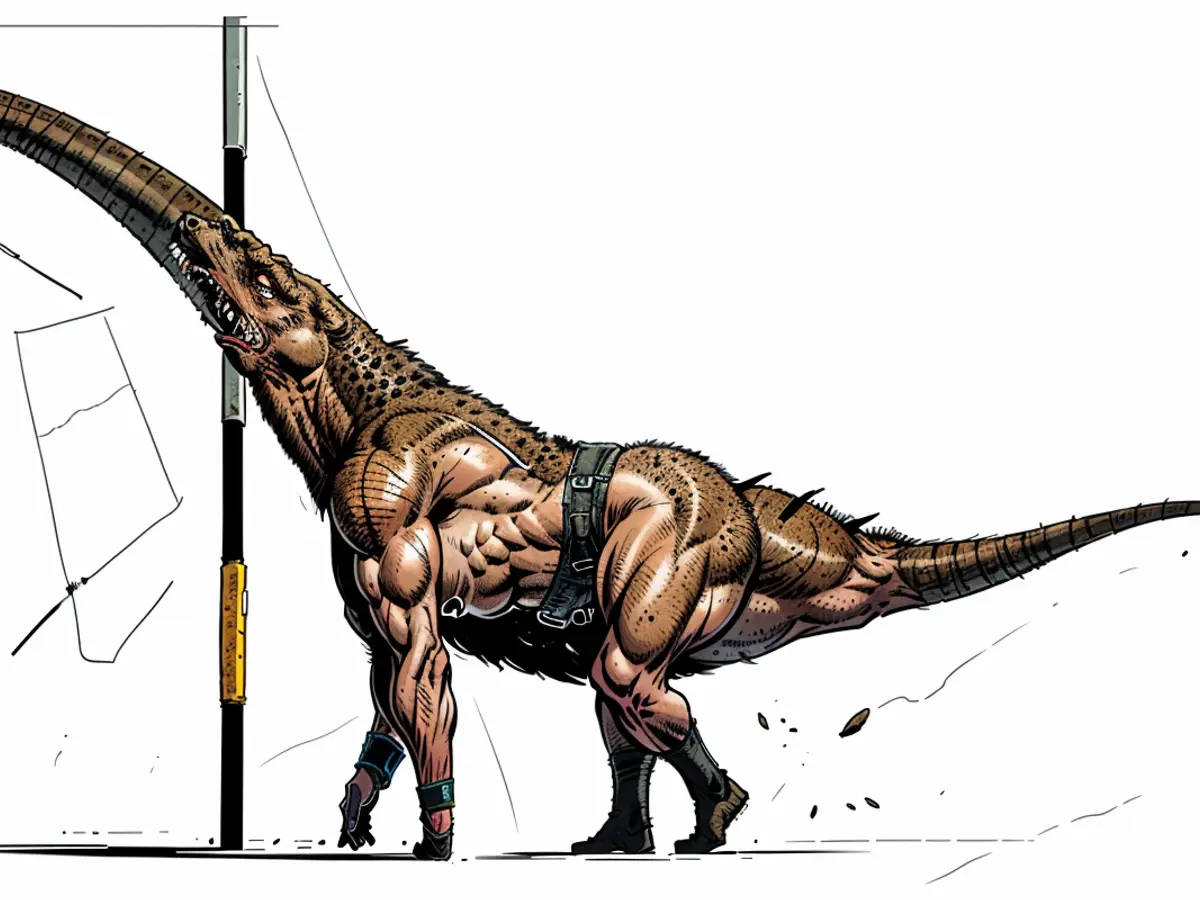Uncovered in Spain is a colossal, elongated-necked dinosaur specimen of substantial size.
In the digging grounds of Lo Hueco, Spain, archaeologists are unearthing fossils. The bones unearthed turn out to be a new, hitherto unidentified dinosaur species. This is a lucky break for researchers, as it provides fresh perspectives into the demise of the colossal beasts.
A leviathan in Iberia: Specialists have stumbled upon a dinosaur measuring approximately 20 meters in length and weighing an impressive 15 tons in Spain. This long-necked vegetarian dwelt around 75 million years ago, as reported by Spanish and Portuguese researchers. They detail the titanosaur in the publication "Nature Communications Biology".
This previously unknown dinosaur species holds the potential for significant insights into dinosaurs on the brink of extinction around 66 million years ago, the scientists imply. The existence of the species in Spain indicates that Europe, contrary to earlier assumptions, served as a hub for native and immigrant sauropods toward the end of the Cretaceous period.
"Beforehand, it was believed that almost all European titanosaurs belonged to the native Lirainosaurus genus, which evolved in seclusion in Europe from the end of the Cretaceous era until its extinction," explained co-author Francisco Ortega. This recent discovery suggests that titanosaurs made their way to Europe toward the end of the Cretaceous, sharing kinship with Asian and North American dinosaurs.
Named after a Don Quixote character
The fossils were unearthed in the Lo Hueco excavation site, around 200 kilometers south of Madrid. According to Ortega, this is one of the most complete sauropod skeletons ever discovered in Europe. Ortega highlighted the find's significance to journalists at the presentation.
The newly identified dinosaur was christened "Qunkasaura pintiquiniestra". The first moniker is a blend of the discovery site, the province of Cuenca, and "Saura", which signifies both the Latin word for "lizard" and the painter Antonio Saura. "Pintiquiniestra" is the name of a colossal queen figure from Miguel de Cervantes' "Don Quixote".
The excavation site holds further secrets
Lo Hueco, unearthed during excavations for Spain's high-speed train project in 2007, is considered one of Europe's most significant paleontological sites from the Upper Cretaceous era. Over 12,000 fossils have been excavated there so far - from sauropods, but also turtles and crocodiles.
Ortega described Lo Hueco as a guidebook to Europe's Upper Cretaceous sauropods. By analyzing the remnants, paleontologists aspire to learn more about the living conditions during that era. Plenty remains to be discovered, said Ortega. "We are aware of the presence of at least one more specimen in Cuenca."
The newly discovered dinosaur, named "Qunkasaura pintiquiniestra," shares kinship with titanosaurs from Asia and North America, challenging the previous belief that European titanosaurs all belonged to the native Lirainosaurus genus. This titanosaur fossil, found in the Lo Hueco excavation site, is one of the most complete sauropod skeletons ever discovered in Europe.
The existence of this dinosaur species in Spain suggests that Europe served as a hub for native and immigrant sauropods toward the end of the Cretaceous period, contributing significantly to our understanding of dinosaurs on the brink of extinction around 66 million years ago.








